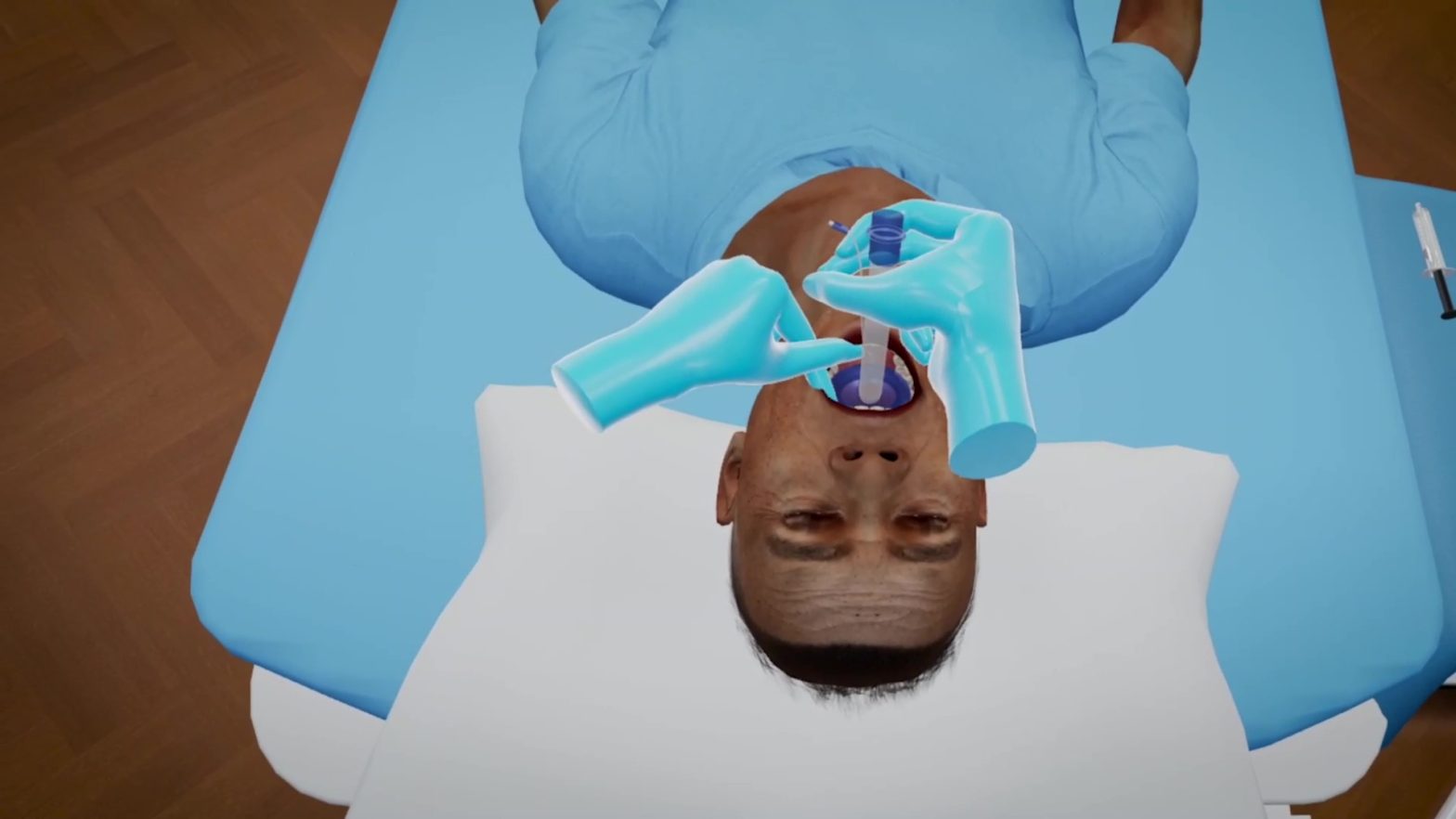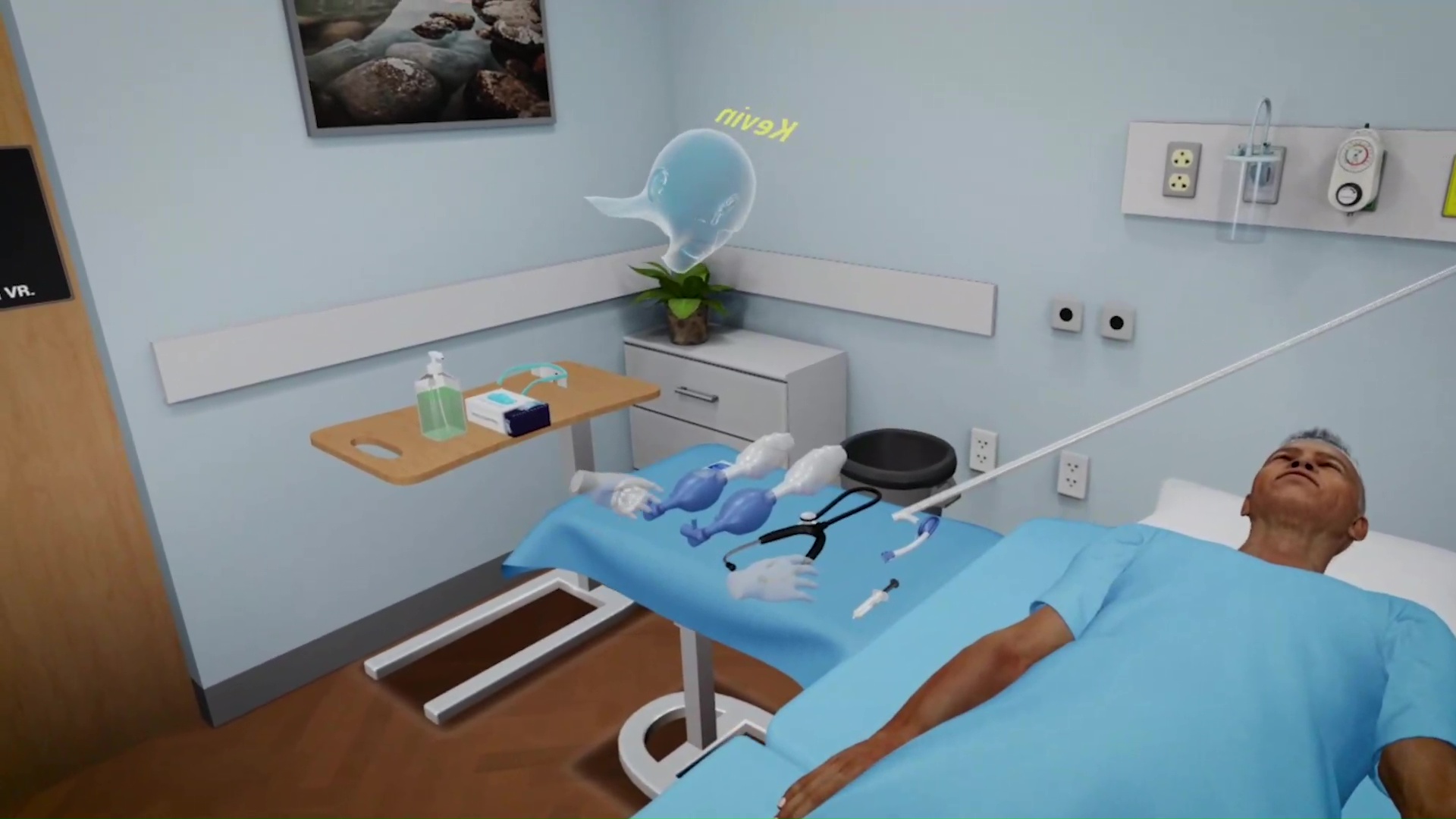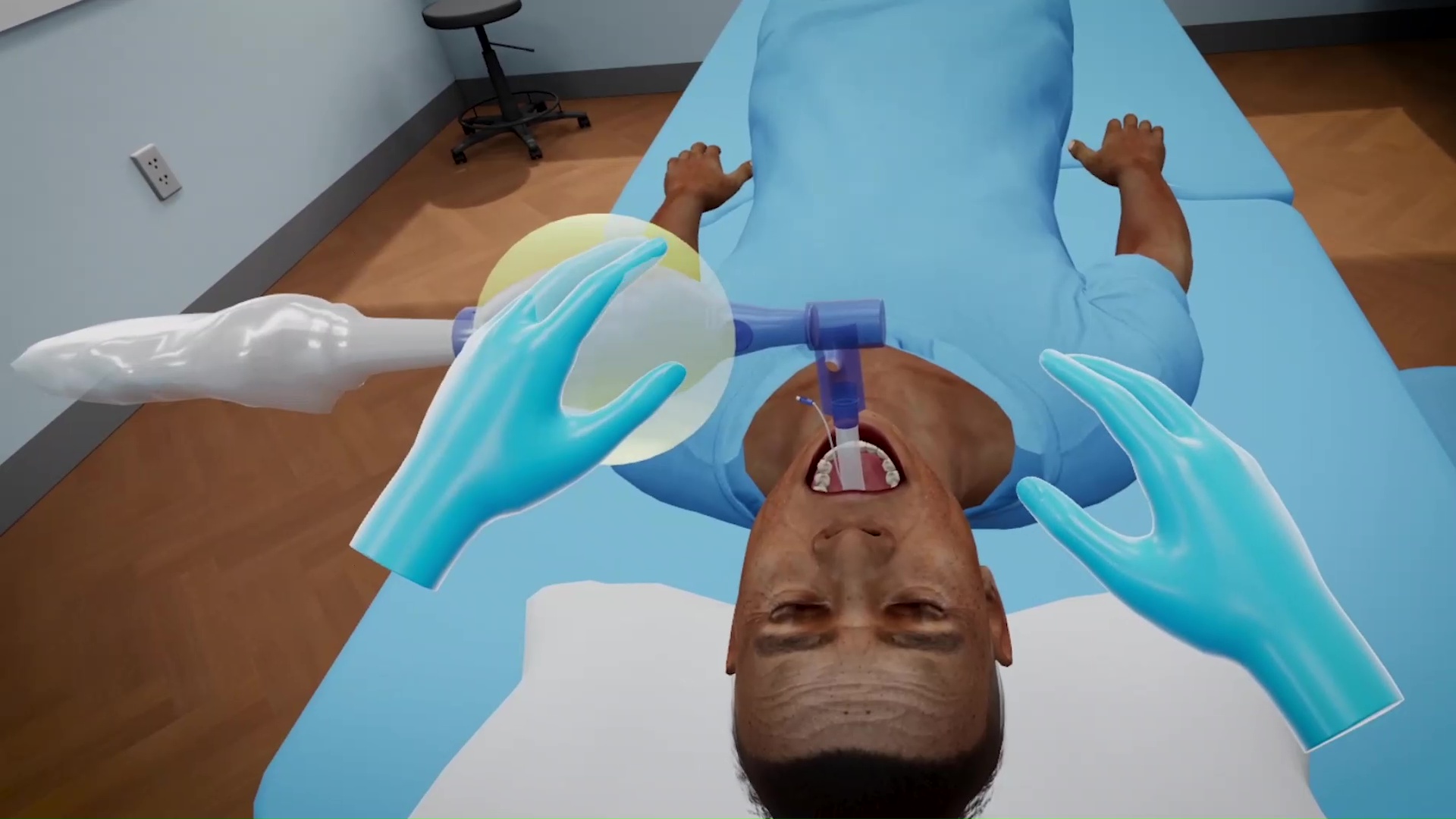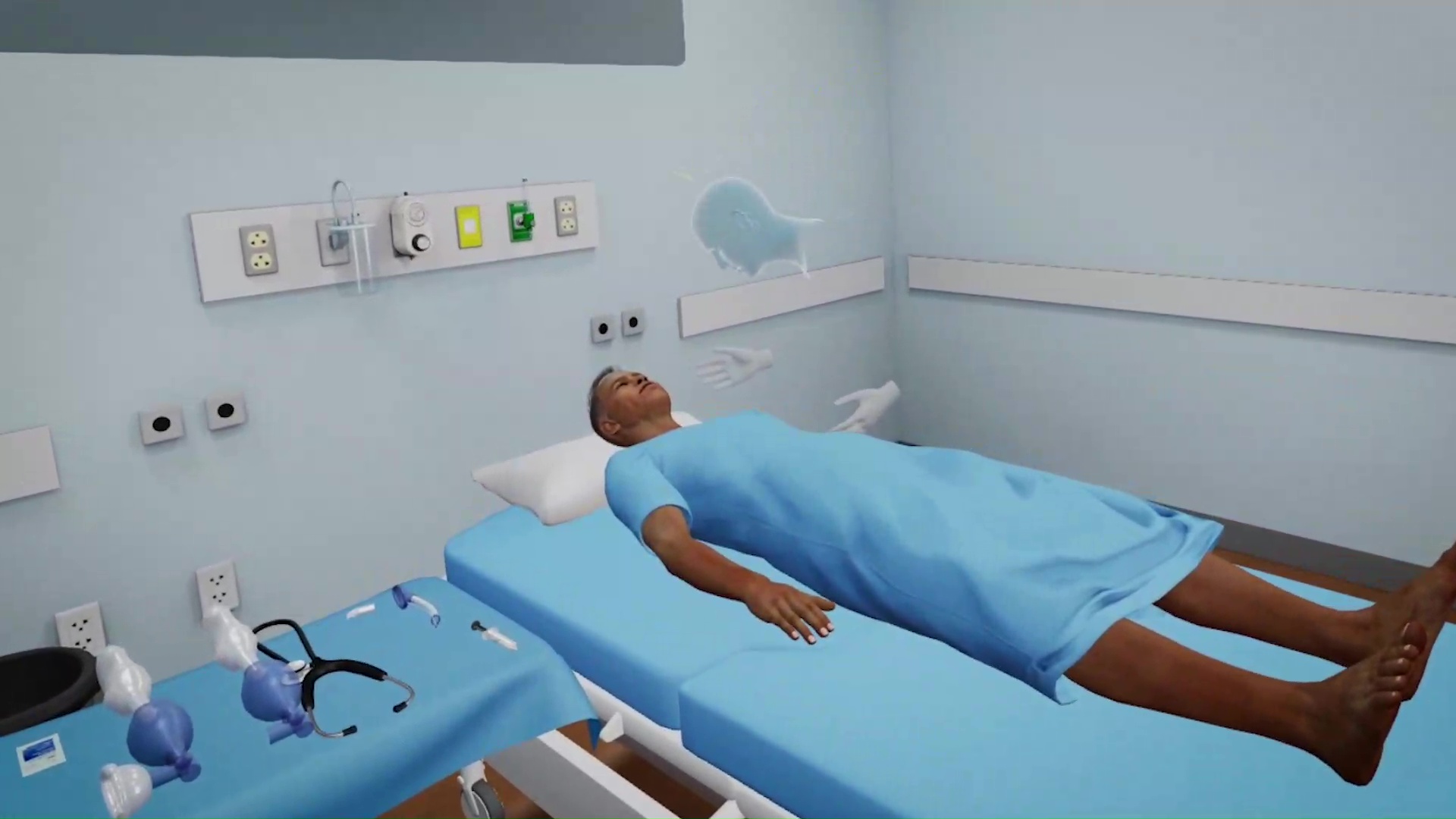Supraglottic Airway
Supraglottic Airways are devices that are inserted into a patient’s pharynx to keep the upper airway open and facilitate unobstructed ventilation. They form a crucial part of emergency management when tracheal intubation and ventilation fail or are difficult to manage.
This VR simulation for Supraglottic Airway is designed to help healthcare practitioners practice the procedure of placing a laryngeal mask airway (LMA) in a safe and controlled virtual environment with a virtual patient. With both training and assessment modes, learners can perform the procedure and assess themselves on their performance.
- Applying standard technique to open patient’s mouth
- Inserting LMA and guide into throat using clinically approved method
- Ensuring correct placement of LMA

- Reichman, E. F. (2013). Chapter 18. Supraglottic Airway Devices. In Emergency Medicine Procedures, 2e. McGraw Hill. Retrieved from AccessEmergency Medicine.
- Clinical Anesthesia Procedures. (2019). Airway Evaluation and Management – Laryngeal Mask Airway. In R. M. Pino (Ed.), Clinical Anesthesia Procedures (9th ed.). Wolters Kluwer. Retrieved from Anesthesia Central.
 Multi-player
Multi-player
Sessions Physics-based Interaction
Physics-based Interaction
Core Skills Training

Supraglottic Airways
As a part of this Supraglottic Airway procedure, the user will begin the procedure by donning eye protection and non-sterile gloves. The user will go on to use water-soluble lubricant to lubricate the posterior surface of the distal mask and cuff. The mouth of the patient will be opened using the scissor technique and the laryngeal mask airway (LMA) inserted, manually guiding it along the hard and soft palates and into the throat. Having successfully inserted the LMA the user will inflate the cuff, connect a bag-valve apparatus to the tube and begin ventilation.
All necessary affordances are provided to complete the procedure with efficiency.
Training
With prompts, guidance and affordances learners are hand-held through the process to practice the procedure in a virtual environment with a virtual patient.
- Photorealistic virtual environment
- Physics-based interactions
- Detailed instructions
- Adequate affordances to assist in task completion

Assessment
Test acquired skills to perform the procedures from start to finish without prompts. An incorrect step will take the learner back to the start to start afresh.
- Live scoring
- Instant feedback
- Adequate affordances for efficient performance
- Time tracking to monitor activity completion







